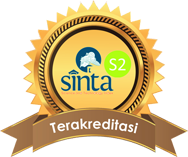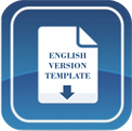PENGEMBANGAN KETERAMPILAN ARGUMENTASI CALON GURU KIMIA MELALUI PENDEKATAN SOCIO CRITICAL AND PROBLEM ORIENTED
DOI:
https://doi.org/10.15575/jtk.v4i1.4816Keywords:
keterampilan argumentasi mahasiswa calon guru, nanosains dan nanoteknologi, socio-critical and problem orientedAbstract
Penelitian ini bertujuan untuk mengembangkan keterampilan argumentasi calon guru kimia melalui pembelajaran nanosains dan nanoteknologi dengan pendekatan socio critical and problem oriented. Penulis menemukan masalah utama adalah mahasiswa calon guru cenderung pasif dan proses pembelajaran tidak melibatkan siswa dalam berargumentasi. Penelitian kualitatif ini dilakukan pada 32 mahasiswa calon guru. Pengumpulan data yang digunakan adalah wawancara, observasi, lembar kerja mahasiswa, jurnal reflektif, dan soal tes keterampilan berpikir tingkat tinggi (HOTS). Hasil penelitian menunjukkan bahwa mahasiswa calon guru terlibat dan termotivasi dalam pengalaman pembelajaran nanosains dan nanoteknologi yang bermakna dan keterampilan argumentasi mahasiswa calon guru sudah muncul dan berkembang dengan baik selama proses pembelajaran yaitu mampu memberikan claim dan data, dan beberapa warrants, qualifier dan rebuttal pada argumen yang diberikannya. Pemahaman konsep nanosains seperti karakteristik unik, sifat fisik, sifat kimia nanomaterial dan aplikasi nanosains dan nanoteknologi sudah baik. Pada akhirnya, implikasi pembelajaran tersebut telah memberikan peluang bagi siswa untuk mengembangkan keterampilan argumentasi mereka dan memberikan pengalaman pembelajaran yang dapat diimplementasikan pada kelas sains selanjutnya.
References
Berland, L. K., & Reiser, B. J. (2011). Classroom communities’ adaptations of the practice of scientific argumentation. Science Education, 95(2), 191–216.
Christenson, N., Rundgren, & Zeidler. (2014). The Relationship of Discipline Background to Upper Secondary Students’ Argumentation on Socioscientific Issues. Research in Science Education, 44(4), 581–601.
Christine, O., & Hayden, H. (2008). Contextualising nanotechnology in chemistry education. Chemistry Education Research and Practice, 9(1999), 43–50.
Creswell, J. W. (2014). RESEARCH DESIGN: Qualitative, Quantitative, and Mixed Methods Approaches (4th ed.).
Driver, R., Newton, P., & Osborne, J. (2002). Establishing the norms of scientific argumentation in classrooms. Science Education, 84(3), 287.
Eilks, I. (2002). Teaching ‘Biodiesel’: a Sociocritical and Problemoriented Approach To Chemistry Teaching and Students’ First Views on It. Chem. Educ. Res. Pract., 3(1), 77–85.
Erduran, S., Ardac, D., & Yakmaci-Guzel, B. (2006). Learning to teach argumentation: Case studies of pre-service secondary science teachers. Eurasia Journal of Mathematics, Science and Technology Education, 2(2), 1–14.
Feierabend, T., & Eilks, I. (2011). Teaching the societal dimension of chemistry using a socio-critical and problem-oriented lesson plan based on bioethanol usage. Journal of Chemical Education, 88(9), 1250–1256.
Hailat, S., Eyadat, Y., & Zaid, K. (2018). The effect of using a virtual history strategy on the development of historical thinking skills for undergraduate classroom teachers. New Educational Review, 51(1), 115–124.
Hobman, J. L., & Crossman, L. C. (2015). Bacterial Antimicrobial Meteal Ion Resistance. †School of Biological Sciences, University of East Anglia, Norwich, NR4 7TJ, UK.
Jiménezâ€Aleixandre, M. P., Bugallo RodrÃguez, A., & Duschl, R. A. (2000). “Doing the lesson†or “doing scienceâ€: Argument in high school genetics. Science Education, 84(6), 757-792.
Jiménez-Aleixandre, M. P., & Pereiro-Muñoz, C. (2005). Argument construction and change while working on a real environment problem. Research and the Quality of Science Education, 419–431.
Karisan, D. (2015). Exploration of Preservice Science Teachers’ Written Argumentation Skills in A Laboratory Course: A Toulmin-Based Analysis. Ines Journal, 2(5), 247–261.
Khishfe, R. (2012). Relationship between nature of science understandings and argumentation skills: A role for counterargument and contextual factors. Journal of Research in Science Teaching, 49(4), 489–514.
Kuhn, D., & Udell, W. (2007). Coordinating own and other perspectives in argument. Thinking and Reasoning, 13(2), 90–104.
Laherto, A. (2011). Incorporating nanoscale science and technology into secondary school curriculum: Views of nano-trained science teachers. Nordic Studies in Science Education, 7(2), 126.
Marpaung. (2015). Uji Aktivitas Krim Ekstrak Metanol Bunga Rosella (Hibiscus sabdariffa) Sebagai Tabir Surya. Power of Science and Technology.
McNeill, K. L. (2009). Teachers’ use of curriculum to support students in writing scientific arguments to explain phenomena. Science Education, 93(2), 233–268.
McNeill, K. L., & Pimentel, D. S. (2010). Scientific discourse in three urban classrooms: The role of the teacher in engaging high school students in argumentation. Science Education, 94(2), 203–229.
Mintzes, J. J., & Lin. (2010). Learning argumentation skills through instruction in socioscientific issues: the effect of ability level. (July 2008), 993–1017.
Moor, J., & Weckert, J. (2004). Nanoethics: Assessing the nanoscale from an ethical point of view. Discovering the Nanoscale, 301–310.
Newton, P., Driver, R., & Osborne, J. (1999). The place of argumentation in the pedagogy of school science. International Journal of Science Education, 21(5), 553–576.
Osborne, J. (2005). The role of argument in science education. Research and the Quality of Science Education, 367–380.
Passmore, C., & Stewart, J. (2002). A modeling approach to teaching evolutionary biology in high schools. Journal of Research in Science Teaching, 39(3), 185–204.
Ridwan, A., & Rahmawati, Y. (2017). Integration of A Socio Critical And Problem Oriented Approach In Chemistry Learning for Students’ Soft Skills. 7(1), 33–41.
Sandoval, W. A., & Reiser, B. J. (2004). Explanation-driven inquiry: Integrating conceptual and epistemic scaffolds for scientific inquiry. Science Education, 88(3), 345–372.
Sebastian, V., & Gimenez, M. (2016). Teaching Nanoscience and Thinking Nano at the Macroscale: Nanocapsules of Wisdom. Procedia - Social and Behavioral Sciences, 228(June), 489–495.
Sengupta, Sukalyan And Nawaz, T. (2018). Silver nanoparticles in clothing wash out — and may threaten human health and the environment. Retrieved April 10, 2019, from https://phys.org/news/2018-03-silver-nanoparticles-outand-threaten-human.html
Stewart, J., Cartier, J. L., & Passmore, C. M. (2005). Developing understanding through model-based inquiry. How Students Learn History, Mathematics, and Science, 515–565. Retrieved from http://mennta.hi.is/vefir/grunnsk/nattvis_og_umhv/How students learn_science_in_classroom/Kafli 12_515_565.pdf
Sutimin, L. A., Joebagio, H., Sariyatun, Hum, M., & Abidin, N. F. (2018). The development of deconstructive learning history model to promote the higher order thinking skill of university students. New Educational Review, 51(1), 19–29.
Uddin, M., & Chowdhury, a R. (2001). Integration of Nanotechnology Into The Undergraduate Engineering Curriculum. Engineering Education, 8–11.
Vellom, R. P., & Anderson, C. W. (1999). Reasoning about data in middle school science. Journal of Research in Science Teaching, 36(2), 179–199.
Venville, G. J., & Dawson, V. M. (2010). The impact of a classroom intervention on grade 10 students’ argumentation skills, informal reasoning, and conceptual understanding of science. Journal of Research in Science Teaching, 47(8), n/a-n/a.
Widowati, I., Efiyati, S., & Wahyuningtyas, S. (2014). Uji Aktivitas Antibakteri Ekstrak Daun Kelor (Moringa Oleifera) Terhadap Bakteri Pembusuk Ikan segar (Pseudoonas Aeruginosa). PELITA, IX.
Wijaya, W. S., Feronika, T., & Fairusi, D. (2018). Penerapan Problem Based Learning Berpendekatan Sets Terhadap Keterampilan Berpikir Kritis Siswa. Jurnal Tadris Kimiya, 3(1), 269.
Zeidler, D. L., Sadler, T. D., Simmons, M. L., & Howes, E. V. (2005). Beyond STS: A research-based framework for socioscientific issues education. Science Education, 89(3), 357–377.
Zetriuslita, Ariawan, R., & Nufus, H. (2016). Students’ critical thinking ability: Description based on academic level and gender. Journal of Education and Practice, 7(12), 154–164. Retrieved from https://files.eric.ed.gov/fulltext/EJ1099476.pdf
Downloads
Published
How to Cite
Issue
Section
Citation Check
License
Authors who publish with this journal agree to the following terms:
- Authors retain copyright and grant the journal right of first publication with the work simultaneously licensed under a Creative Commons Attribution-ShareAlike that allows others to share the work with an acknowledgement of the work's authorship and initial publication in this journal.
- Authors are able to enter into separate, additional contractual arrangements for the non-exclusive distribution of the journal's published version of the work (e.g., post it to an institutional repository or publish it in a book), with an acknowledgement of its initial publication in this journal.
- Authors are permitted and encouraged to post their work online (e.g., in institutional repositories or on their website) prior to and during the submission process, as it can lead to productive exchanges, as well as earlier and greater citation of published work (See The Effect of Open Access).








